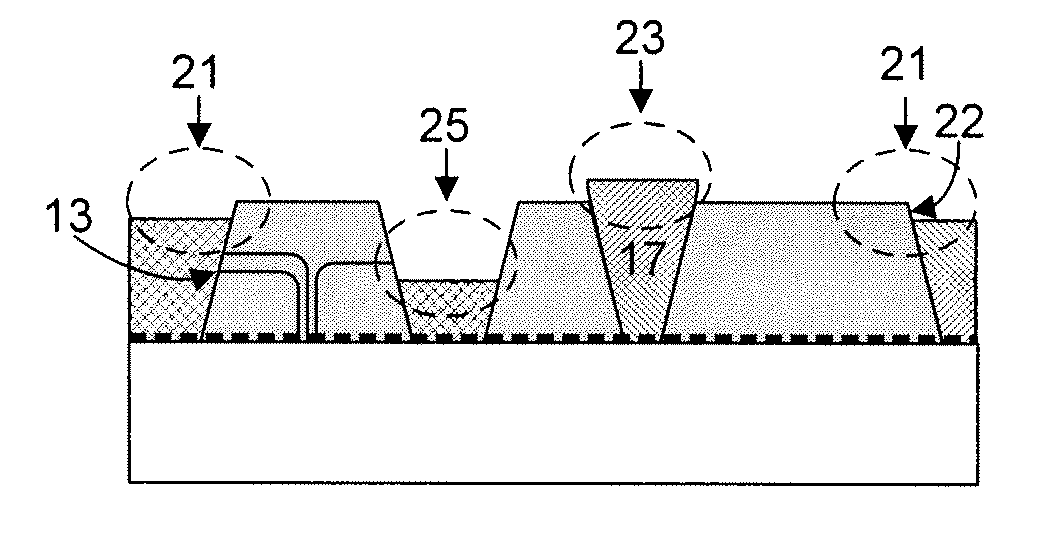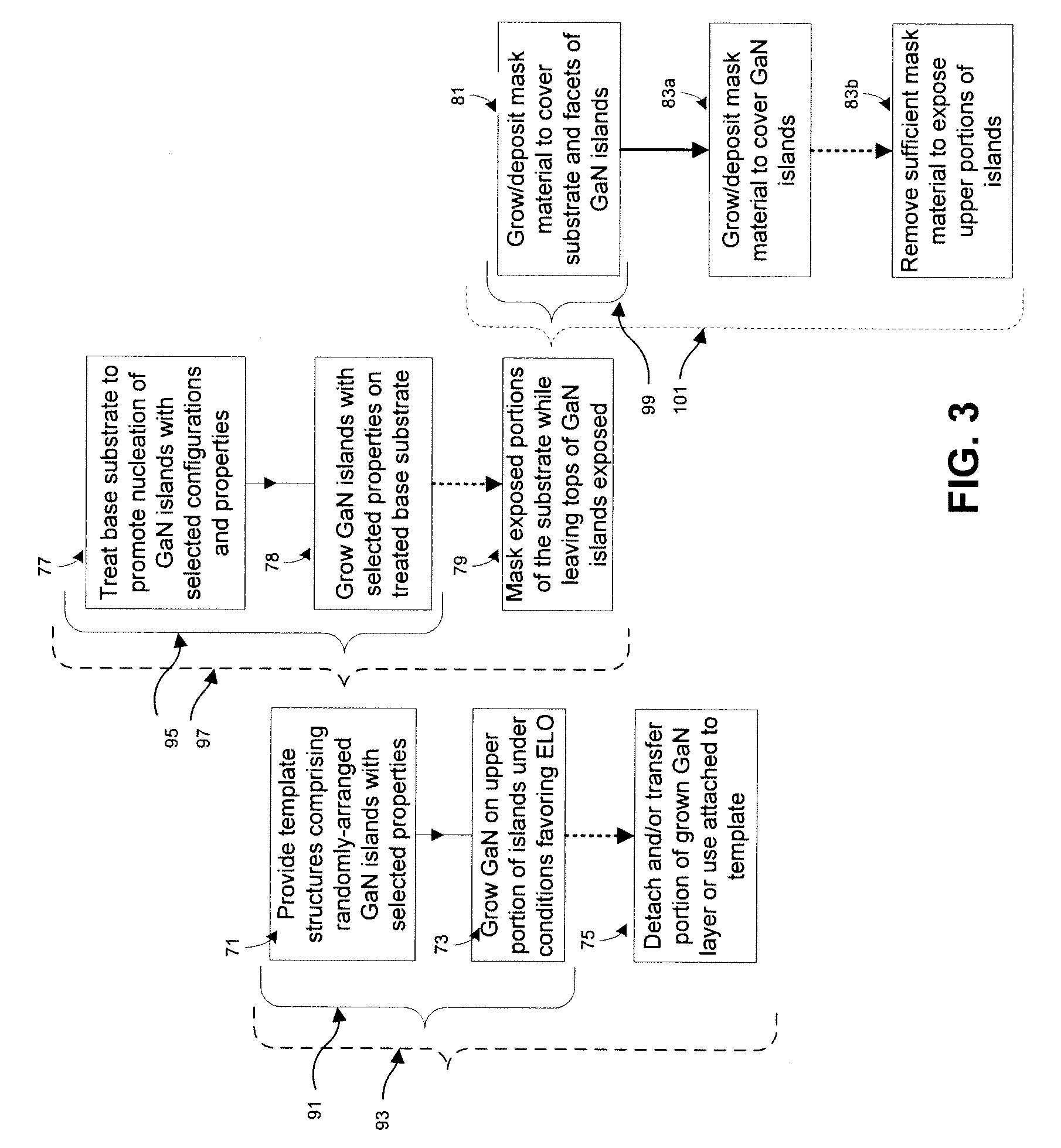Epitaxial methods and templates grown by the methods
- Summary
- Abstract
- Description
- Claims
- Application Information
AI Technical Summary
Benefits of technology
Problems solved by technology
Method used
Image
Examples
example 1
[0127]FIGS. 7A-B illustrate top views and FIG. 7C illustrates a TEM side view of an actual examples of a preferred base substrate 111 with a plurality GaN islands / pillars, in particular islands / pillar 103, 105, and 107, corresponding to the schematic illustration in FIG. 4B. The double headed arrow in FIG. 7A represent 100 μm and in FIG. 7B represents 50 μm. FIG. 7B illustrates in more detail the region of FIG. 7A within frame 101.
[0128]The island / pillar features of FIGS. 7A-C have been produced by heating a MOVPE reactor to temperature of between 800° C. to 1000° C., in preferred embodiment the temperature was maintained at 900° C. during the growth of the isolated GaN features. The pressure range during the growth was maintained between 200 Torr to 400 Torr, in preferred embodiment the pressure was maintained at 200 Torr. The ratio of V species (e.g. Ammonia) to III species (e.g. Trimethylgallium) was kept low to promote 3-D pillar growth; V / III ratios utilized were between 700-12...
example 2
[0134]FIG. 8 illustrates an alternative embodiment for producing substantially isolated pillars / islands of a III nitride material. The GaN islands illustrated in FIG. 8 were produced by the etching of a 2D layer of III nitride material that included regions with significantly different etch resistance. The etch resistance across a III nitride layer can vary substantially depending on the crystal polarity and / or defect density in a particular area, for example growth conditions are known in the art which can lead to GaN layers with varying crystal polarity across a wafer. The etch conditions for the example shown in FIG. 8 involved the exposure of a substantially continuous GaN film to a potassium hydroxide etch solution at a temperature of 80° C. for a time period of between 6-10 minutes.
[0135]The resulting pillar / island-like features are generally spatially separated, with the underlying substrate exposed between the features, have a generally uniform maximum height, and a truncate...
PUM
 Login to View More
Login to View More Abstract
Description
Claims
Application Information
 Login to View More
Login to View More - R&D
- Intellectual Property
- Life Sciences
- Materials
- Tech Scout
- Unparalleled Data Quality
- Higher Quality Content
- 60% Fewer Hallucinations
Browse by: Latest US Patents, China's latest patents, Technical Efficacy Thesaurus, Application Domain, Technology Topic, Popular Technical Reports.
© 2025 PatSnap. All rights reserved.Legal|Privacy policy|Modern Slavery Act Transparency Statement|Sitemap|About US| Contact US: help@patsnap.com



